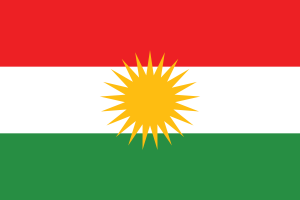Language/Central-kurdish/Grammar/Present-Tense
The present tense is used to describe actions or events that are happening at the current time. In this lesson, you will learn how to form and use the present tense in Central Kurdish.
Consider exploring these related pages after completing this lesson: Give your Opinion & How to Use Have.
Forming the Present Tense
In Central Kurdish, the present tense is formed by adding suffixes to the stem of the verb. The stem of the verb is the base form of the verb without any suffixes or prefixes.
There are two types of verbs in Central Kurdish: strong verbs and weak verbs. Strong verbs have a fixed stem while weak verbs have a variable stem.
Present Tense Suffixes for Strong Verbs
For strong verbs, the suffixes for the present tense are as follows:
| Person | Suffix |
|---|---|
| 1st singular (I) | -m |
| 2nd singular (you) | -t |
| 3rd singular (he/she/it) | -d/-e |
| 1st plural (we) | -n |
| 2nd plural (you all) | -tun |
| 3rd plural (they) | -an |
Example:
The verb "zivirin" meaning "to write" is a strong verb. To form the present tense:
- zivir + m = zivirm (I write)
- zivir + t = zivirt (You write)
- zivir + d = zivird (he/she/it writes)
- zivir + n = zivirn (we write)
- zivir + tun = zivirtun (you all write)
- zivir + an = ziviran (they write)
Present Tense Suffixes for Weak Verbs
For weak verbs, the suffixes for the present tense are as follows:
| Person | Suffix |
|---|---|
| 1st singular (I) | -em |
| 2nd singular (you) | -î/-îya/-ti |
| 3rd singular (he/she/it) | -e/-a |
| 1st plural (we) | -en |
| 2nd plural (you all) | -în |
| 3rd plural (they) | -in |
Example:
The verb "cih" meaning "to place" is a weak verb. To form the present tense:
- cih + em = cihem (I place)
- cih + î = cihî (You place)
- cih + e = cihe (he/she/it places)
- cih + en = cihen (we place)
- cih + în = cihîn (you all place)
- cih + in = cihin (they place)
Using the Present Tense
The present tense is used to describe actions or events that are happening at the current time. It can also be used to describe habitual actions, things that happen regularly, or true facts.
Examples
- Ez ders digotim. (I am teaching now.)
- Tu biçî. (You go.)
- Ew mirinî ye. (He/she/it is dead.)
- Em hevpeyvîn dikin. (We are talking.)
- Hûn kar dikin. (You all work.)
- Wan diçin. (They go.)
Negation
To make a negative sentence in the present tense, you need to add the word "ne" before the verb.
Example:
- Ez naxwazim. (I don't want.)
- Tu neçî. (You don't go.)
- Ew nadizanin. (They don't know.)
Interrogative
To ask a question in the present tense, you can simply invert the subject and the verb.
Example:
- Ji te rehet e? (Are you comfortable?)
- Kî dixwaze? (Who wants?)
- Ji bo çi kar dikin? (What are they working for?)
Conclusion
In this lesson, you have learned how to form and use the present tense in Central Kurdish. You now have the ability to express actions and events happening in the present moment. To further enhance your language learning experience, try using the present tense in everyday situations and observe how it's being used in media and other forms of communication.
Upon wrapping up this lesson, take a look at these related pages: Negation & 0 to A1 Course.

